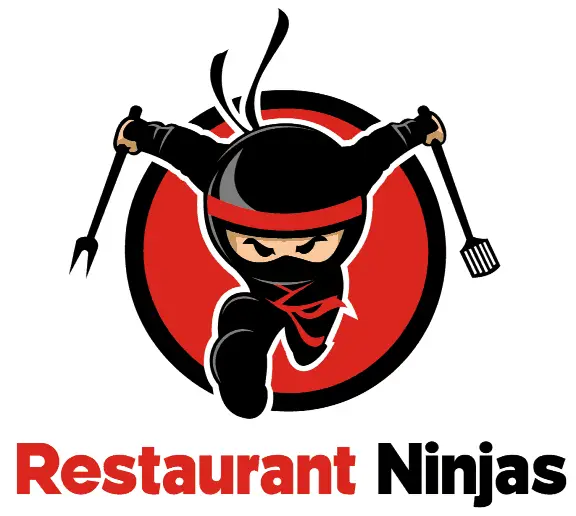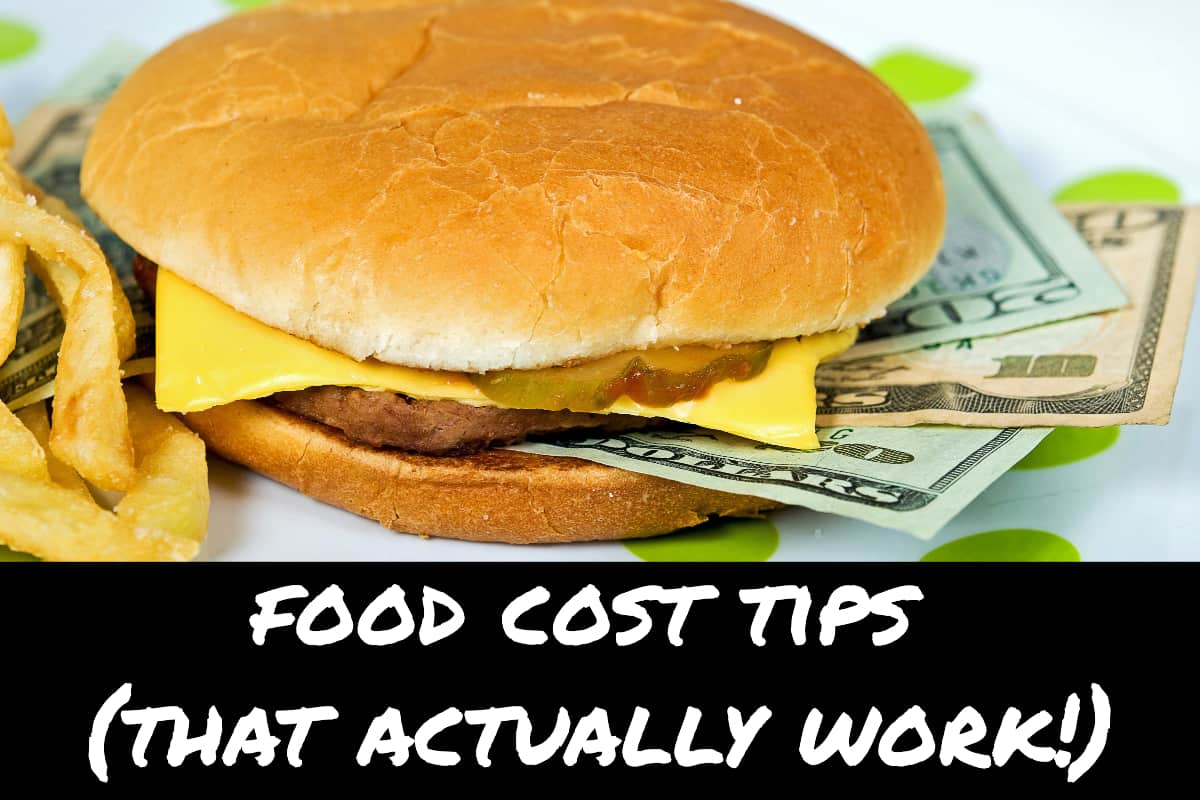The restaurant industry is known to have a famously slim profit margin. Naturally, controlling costs is a necessity to remain profitable and successful. The cost of food (food cost) is one of the two most significant contributing factors to overall costs. Simply put, if you can control food costs, you are about one-half of the way towards creating a profitable restaurant.
Enacting controls over food cost is not particularly tricky, however, it does take some effort to put into place. Many of the below tips are often overlooked as too time-consuming to be worth the pennies saved by putting them into place. That could not be more wrong; those pennies quickly add up and erode your profit.
Taking control of food cost is a must if you want to be successful. Begin utilizing these 23 tips today and start watching your profits rise tomorrow!
1. Forecast Accurately

Unless you are a statistics nerd (guilty), playing with a spreadsheet and trying to forecast sales down to the dollar can be a soul grinding task. Unfortunately, forecasting sales accurately is a necessity if you’re going to be able to maintain consistently low food and labor costs. Luckily, spreadsheets and forecasting programs make it easy.
Forecasting sales accurately is crucial because it helps you determine how much of each product you need to order. Over ordering a perishable product can lead to it spoiling before you use it and force you to throw the product away. For example, let’s say you know you sell about half a case of green leaf lettuce per thousand dollars in sales. You can use that usage per thousand in conjunction with your forecast to figure out how many cases you will need for the week.
Creating a sales forecast does not need to be complicated and is best done with a dedicated program or a simple Excel spreadsheet. Forecast day by day, meal period by meal period, and, if you have the reporting available, hour by hour.
Each week, track how you do at forecasting by comparing your forecast to your actual sales. Your goal should be to forecast each day’s sales within 5% accuracy.
2. Order Appropriately
Under ordering leaves you at risk of running out of an ingredient for a product on your menu, which leaves you at high risk of disappointing guests. It also causes friction in your operations as the front of house employees “forget” about the 86ed item or create crazy modifications to make up for the missing ingredient. If you end up sourcing the food from an alternate source (like the grocery store), you are going to end up paying more and thus driving your costs up. In short, running out of food sucks.
Over-ordering, on the other hand, causes you to keep cash tied up in product sitting on a shelf instead of sitting in a bank account earning interest. More importantly, to this discussion, overordering can cause spoilage by not using a product fast enough.
Order enough that you are not at risk of running out, but don’t have so much on hand that you run the risk of food spoilage. Regularly adjust your pars to use between 150% to 180% of your usage.
3. Ensure You Get What You Pay For
One of the fastest ways to drive yourself crazy when trying to figure out why your food cost is high is not knowing if you’re getting the food that you ordered in the first place. Every single item you purchase that comes into your restaurant should be matched against the invoice to ensure accuracy. This includes food, paper supplies, alcohol, china, and anything else that you pay for.
Checking in orders is more than just counting cases. You have to check-in products against how you pay for them. That means you should be weighing, measuring, and counting as you check items in during receiving. While you’re not going to be able to do this with every single case of every single thing, you should always do it with your expensive ingredients (meats), and randomly check a few cases of everything else.
4. Manage Waste
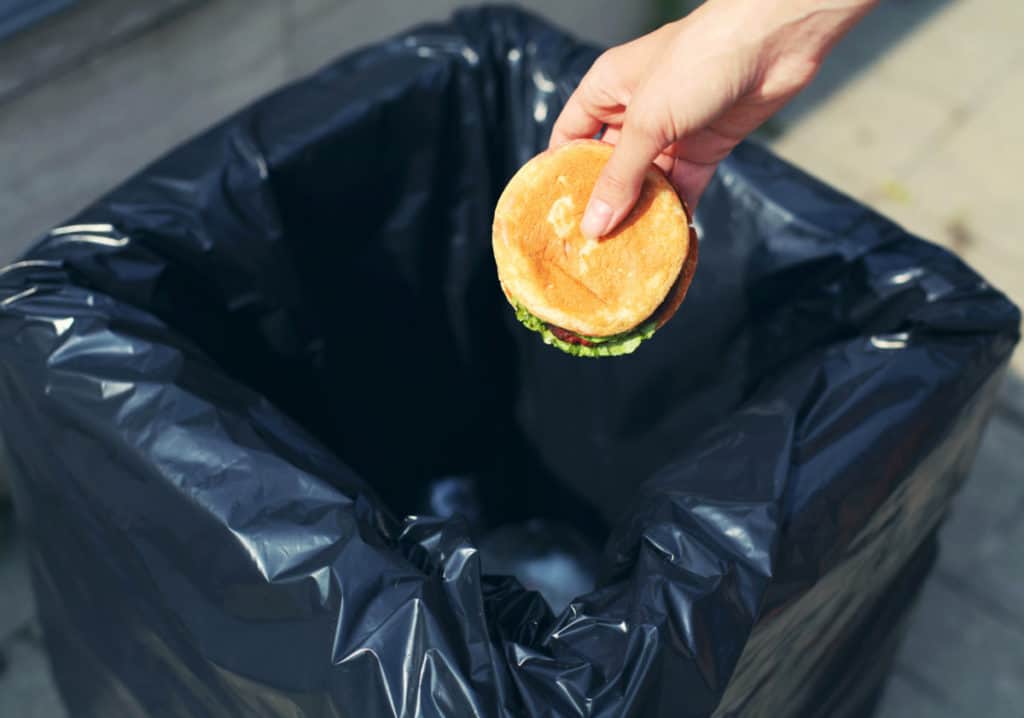
Waste comes in many forms, including employee mistakes, remakes, over-ordering, order prep, and so forth. No matter how much of a well-oiled machine your operation becomes, there will always be some amount of waste.
Managing waste is a process of continuous improvement. To do that, you need to develop tracking mechanisms. A great start to this is a waste sheet. Track everything that gets thrown out. It should be specific and include the item, portions, reason, and person responsible. Use a separate waste sheet each day and, if possible, enter into the POS system to make long term tracking and analysis easier.
Aside from keeping detailed track of waste, other tactics that you can employ to help reduce waste include organizing your food storage to keep easily spoiled items away from the door and utilizing waste wherever possible.
5. Manage Theft
Unfortunately, theft is something that just about every restaurant operator is going to have to deal with at some point in time. I have seen some creative methods of stealing in my years. It never ceases to amaze me the lengths to which people will go to steal. Stay vigilant and assume that nobody is above stealing.
Stealing comes in many forms, be it little snacks here and there, giving out complimentary drinks, over portioning a friend’s meal, or straight up moving cases out the back door. The truth is all of these things are different forms of stealing and need to be managed. Even the minor snacking will add up after a while. Ensure that your employee manual has well-defined policies regarding what theft is considered.
The best way to manage petty theft is to ensure your employees are given the means to eat regularly. By taking away the desire to snack, you take away a motive for the theft. See #11 for more on employee meals.
Managers are one of the biggest offenders when it comes to theft. They find unique ways to stretch their “benefits.” Much like employees, “hooking up” friends with meals and drinks is a common thing to keep an eye on. Because of their control in the restaurant, a smart manager can hide his or her theft through carefully managing comps, voids, and other nefarious bookkeeping practices.
By tracking your food cost closely, it will be much easier to detect and deter theft. Coaching, security cameras, and daily inventory are other tools you can use to reduce the risk of your employee’s stealing. In the end, though, nothing is more effective than making an example of someone and firing them for stealing from you.
6. Manage Portioning
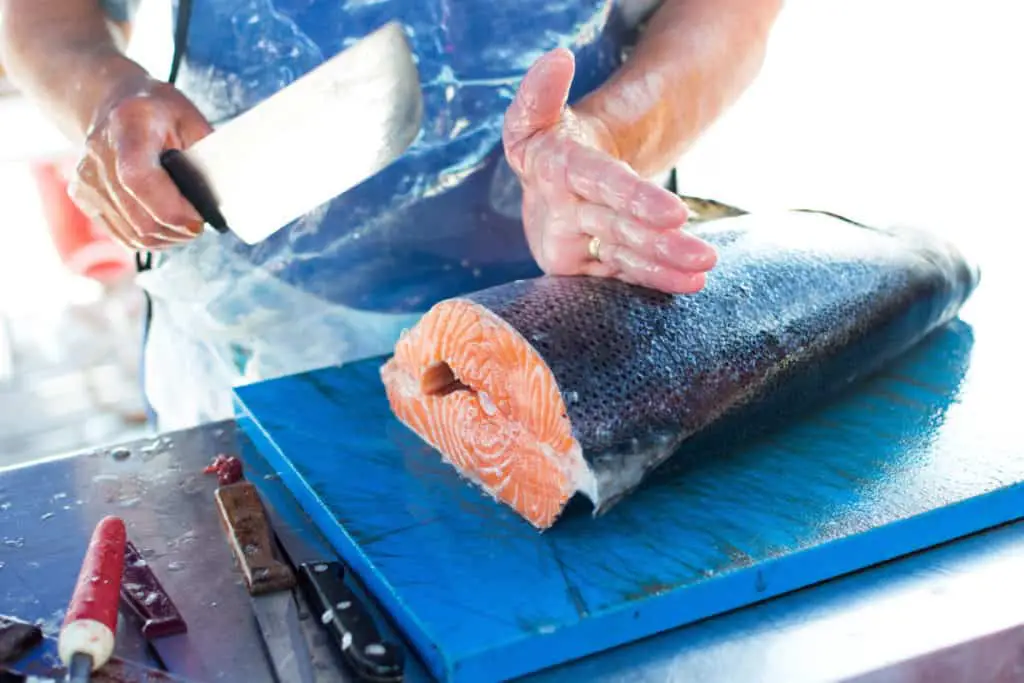
Managing portioning starts with standardized recipes. Once recipes are standardized and the correct portions and tools are identified, portion control comes down to training, coaching, and follow up.
Portion tools are a must at all times, so make sure you always have more than enough on hand. Even your best, most experienced cooks who can portion in their sleep should be required to use portion tools to set the example for the less experienced staff. This includes you as the owner or manager: if you are on the line making food, lead by example and use portion tools.
7. Regular Inventory

I HATE doing inventory. I would rather go to the dentist. But it is a necessary evil in food and beverage. Doing regular inventory gives you a better idea of where you stand at any given moment. You will know precisely what is missing or being wasted.
Here are my best practices for completing inventory
- Inventory meats daily
- Complete at least a partial inventory weekly. I prefer a full inventory weekly, but a partial inventory is better than nothing.
- Complete your inventory either after your last employee has left for the night or before your first employee arrives right before the start of the first day of your business week (whatever day that might be)
- Monthly, inventory should include all food and beverage products, especially if you are not doing it monthly. It should also include key paper supplies if you are a big delivery business.
- Organize your inventory sheets to match your shelf organization
- Before starting inventory, “strip” your storage areas by removing partials from open boxes, straightening boxes, removing box “flaps,” and fronting products. Doing this will make inventory much more manageable.
- Monthly inventory should include the owner or manager if they are not doing weekly inventory.
- Establish a dollar range at which you want to keep your inventory level. Track variance from week to week as a high variance could indicate a potential theft issue by someone in management.
- Use a good shipping scale. Don’t estimate weights
8. Pay Up for Software
Some of the POS and restaurant management software on the market is worth its weight in gold. The analytics you can uncover by entering your inventory into the software weekly is mind-boggling. If used correctly, most of these programs pay for themselves multiple times over. It can calculate your food cost, identify trends, track inventory levels, and calculate your food cost gap.
9. Track Your Gap, Not Your Cost
While the actual food cost percentage is what impacts your bottom line, the overall control operations have over that percentage is limited. Food cost percentage is determined based on a combination of your menu prices, standard recipes, prices, and your product mix.
What you do have control over is your missing product and waste. This is again where a great POS system or kitchen management software comes in handy. Many of these programs allow you to input your recipe and figure out an ideal food cost for each dish.
Using what is rung into the POS system, you can measure the gap between your ideal food cost and your actual food cost. For example, let’s say your theoretical food cost for a given week is 30.5%, and your actual food cost is 33%. Your gap in this scenario is 2.5%.
Your food cost gap is the number one food cost gap that you benchmark, track, and work to improve with your team continually. Try to keep your gap between 1.5% and 3%. This largely depends on the type of food you serve and how much of it is offered complimentary (for example, bread or drink refills).
10. Set Goals & Track Progress

Now that you have a number to track (your food cost gap), set goals and work to lower that number continuously. Create a range that you want your gap to fall. A good range in a quick-service restaurant is 1.5% to 2.5%. In that scenario, I would set the goal to 1.5% with anything between 1.5% and 2% being considered acceptable but in need of improvement and anything over 2% as being unacceptable.
When you start, the actual percentage is a moot point. It is what it is. What IS important is working to continuously improve that number week after week until it falls consistently into the acceptable range and eventually below your target.
By tracking your goals and your progress over a length of time, you have something that you can use to incentivize employees as well as coach them. It’s a talking point that can be used almost like a grade as to how well you and your employees are performing at your job. Each week take 10 minutes with each member of your team in small groups to review your gap, waste and plans to improve upon your biggest opportunities.
11. Communicate Issues
As I mentioned in tip #10, taking a few minutes each week to communicate opportunities with your team is an essential part of improving your food cost. That said, it is essential not to overwhelm them with so much information that they walk away more confused than they started.
In general, start your weekly food cost conversation with each employee by discussing improvements made (or not made) since last week’s results. Be specific in how much the team “moved the needle” on whatever item you deemed in need of improvement and previously discussed.
Next, communicate three items that contributed most to your food cost gap this week and what steps the team will take to reduce the gap on those items.
Do this for three items each week, and over time, your food cost will reach your goal and stay there.
12. Educate Your Team

Educating your team about food cost starts during the interview process and continues into onboarding, training, and throughout their employment. Having every member of your team aware of, bought into, and focused on the team’s goals will make achieving them much easier.
Your kitchen is the heart of your operation in addition to being the heart of food cost controls. Ensure your cooks are well trained and regularly spot-check their knowledge of recipes, use of portion tools, and ability to portion correctly. They should be trained in all recipes and made to demonstrate proficiency before being deemed fully trained.
Train your front of house employees to be food cost-conscious by ensuring they understand the importance of portion control and waste reduction. Servers and bartenders should well aware of your highest margin items. If you are fast food or fast-casual concept, ensure your cashiers are well versed on the entire menu and can navigate the POS quickly to help reduce mistakes during order placement.
Avoid talking with your employees in terms of percentage as they can easily be perceived as “just numbers.” Instead, speak in dollars and units.
One time I was running a fast-casual concept that used frozen soups. We were wasting 12 bags (3 cases) of a particular soup a week on average. I illustrated this at a pre-shift meeting by stacking all the missing soup on a prep table along with the cash that it represented to show them what we were wasting.
I then asked if they could think of better things to spend that cash on, such as upgraded equipment, better cleaning supplies, or potential raises. This shocked some of the employees and created a ripple effect of focus throughout the restaurant that quickly reduced the waste to almost nothing.
13. Provide Free Employee Meals
That’s right; as part of my tips for lowering food cost, I am suggesting that you give food away. Let’s face it; our employees are not paid a very high wage in most cases. They work long hours in a demanding environment and are often treated like crap by customers.
Feeding your employees goes a long way in building morale. Morale leads to employee retention, which is the most significant cost-cutting opportunity in most restaurants. Don’t save pennies by not feeding your employees only to lose hundreds in continually having to hire and replace them.
Paying for food is an expense that they sometimes can’t afford, which often leads them to try to snack. Instead, offer them the opportunity to eat a meal for free with the only qualification being that it gets rung into the computer and altogether accounted for.
The meals shouldn’t be extravagant, and there should be some limits on what they can order. Consider having a separate menu that is just for employees. If they wish to order off the regular menu, they can do so at a discounted rate, say 50%. Another option is to offer a family meal. Sitting down together for a meal before opening or after closing is also an incredible team-building opportunity.
14. Incentivize Cost Savings

Money motivates people, plain and simple. One way to use this to your advantage is to incentivize your team based on food cost. This will train them to care. When cooks see a line on his paycheck labeled “food cost savings incentive,” they will both consciously and subconsciously pay much closer attention to both waste and portion size.
Be creative and come up with a way that you can easily pay them a bonus, depending on how your food cost turns out. Pay a percentage of food cost savings back to your kitchen team as a weekly or monthly bonus. This would incentivize them to waste not only less but also police other employees not to waste or make mistakes. Doing this expands your circle of influence exponentially and turns them into cost control soldiers.
For example, if your goal is a 2.5% food cost gap and you come in at 2.1%, pay them part of the difference! On 25k a week in sales, that .4% is about $1000. Divide half of that up amongst the team and watch how much further they can drive waste down.
The amount of money you devote to this incentive is highly dependent on your situation, but the point is that the more you spread around the savings, the higher the savings become. This creates a win-win situation.
15. No Ticket, No Food, No Exceptions
This heading should say it all. Nothing gets made without a ticket. The only person authorized to order food without a ticket is the manager on duty, and that should only happen for remakes.
Hold yourself accountable for this policy as well. If you’re going to make yourself food, ring it in first to show your employees that you’re not above the policies that you put in place.
16. Do Not Allow Employees to Make Their Own Food
If you’re charging employees for their meals, then I highly recommend that you make it a policy that employees cannot make their meals. When employees make their meals, the portions magically increase dramatically. If you’re paying for the meal, ensure that any extra portions they request get rang into the POS and accounted for.
17. Conduct Receipt Audits
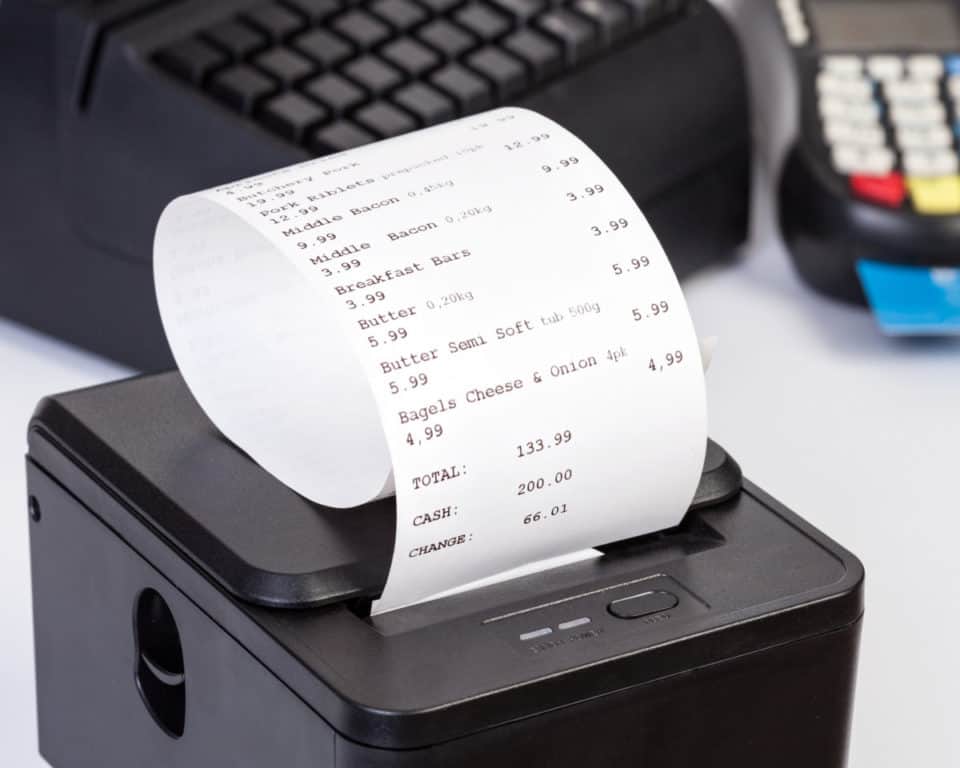
Have you ever wondered if your servers are giving out free “extras” in the attempt to get a better tip? Maybe they are waiting on a table of friends and are giving out free drinks. The best way to check this without being overly obvious is to make random receipt audits a part of your manager’s routine.
To conduct a receipt audit, print a copy of a guest check, memorize a few key points, and then do a table touch. Is there anything on the table that is not on the check? If so, you have a problem with that server.
Do receipt audits randomly and regularly. Servers and bartenders will be deterred from trying to pad their tip with free items if they think there is a chance they could be caught at random.
18. Price Appropriately
If your food is not appropriately priced, it’s going to be very hard to be profitable selling it. Utilize the Market Minus Pricing Model when designing your menu to ensure that you create a mix of profitable items.
Standardized recipes illustrated through detailed recipe cards are a must for any foodservice operation but is something that is still often missing in many independent operations. Without recipe standards and a smart pricing strategy hitting food cost is like throwing darts blindfolded: occasionally you hit; usually, you miss.
One thing often missed when building recipes and considering food cost is yield. Just because you have a 5lb brisket doesn’t mean you will get ten 8oz portions from it. Brisket usually has about a 50% yield. After trimming and moisture loss, that brisket is only going to get you about five portions.
Account for this when building recipe cards and pricing by testing your menu and calculating yields for cooked products on your own. The yield should then get taken into account in your “ideal” food cost formula and thus excluded from your gap.
19. Create Purchasing Standards
Creating purchasing standards for produce and meats helps to ensure you buy the most appropriate quality based on how you are using the ingredient.
For example, if you are using beef to make a stew, you are going to be able to use a less costly cut since the meat it’s going to spend time slow cooking and tenderizing in the stew. The end difference in product quality between using a higher cut of meat versus a lower cut in a stew is going to be negligible.
Eggs are another example of this. Unless you are going to advertise that your eggs are pasteurized, there is no point in paying the extra cost for pasteurized eggs.
20. Track Food Prices from Vendors
The only expenses in your restaurant that are not negotiable are taxes. Everything else, including food, is open to negotiation. Keeping track of your prices will make it easier for you to spot opportunities to save as you see prices fluctuate. It will help you be more in tune with the market and make it easier to anticipate future increases and decreases of specific products.
Tracking every price is too time-consuming to be beneficial. Instead, follow the 80/20 theory. The 80/20 theory states that about 80% of your food cost comes from just 20% of your ingredients. Therefore, focus on only 20% of your ingredients. Rank your ingredients from the most expensive per unit to least. The top 20% of that list is what you should track.
Another reason to track prices is that it allows you to see the potential savings of buying in bulk. Buying in bulk is a great way to cut food costs. If you can safely store the product without it expiring, go for it!
21. Conduct Quarterly Food Pricing Reviews with Vendor
Remember, everything is negotiable. Set a regular quarterly meeting with supplies and use that time to negotiate prices based on your volume. Utilize the pricing of other vendors if you need to have leverage.
Utilize quarterly meetings to discuss any concerns you might have and offer feedback on what is going well. Remember, you are the customer and should be treated as such. While the shipping and distribution industry they are in is very different, it’s vital you keep them aware of your biggest struggles so they can help you overcome them.
22. Utilize Multiple Vendors
Have I mentioned that everything is negotiable? As alluded to above, utilizing multiple vendors is a great way to negotiate pricing. Let different vendors bid out your ingredients. I recommend keeping two vendors, so you always have quick leverage if things go south with one of the vendors.
Don’t rule out getting some ingredients and supplies from amazon or cash and carry warehouses like Sam’s Club or Costco.
23. Join a Purchasing Group
A purchasing group is a group of individuals, in this case, restaurateurs, coming together to buy products in large quantities to get price breaks. Because of the volume at which purchasing groups purchase food, suppliers are often able to offer a much lower price point. Take advantage of this by joining a purchasing group yourself. If you can’t find one in your area, start one!
Final Thoughts
As an operator, “food cost” is often a bad word. It’s something that keeps us up at night, but it does not have to be. Utilize these tips to create standard operating systems, and you will be on your way to stress-free food cost success!
